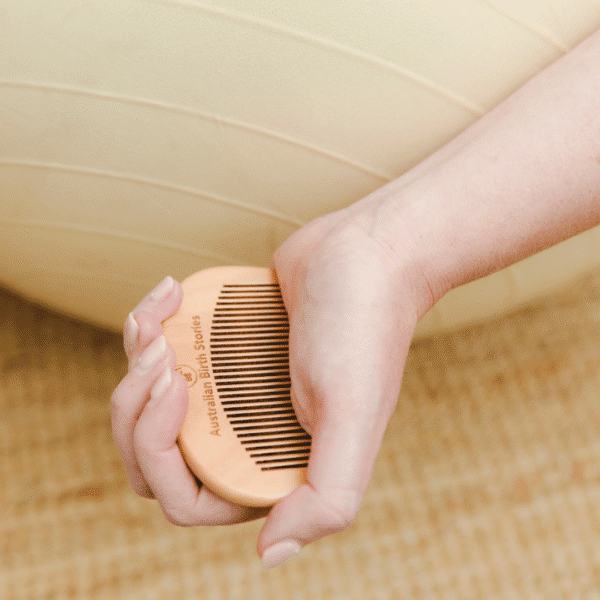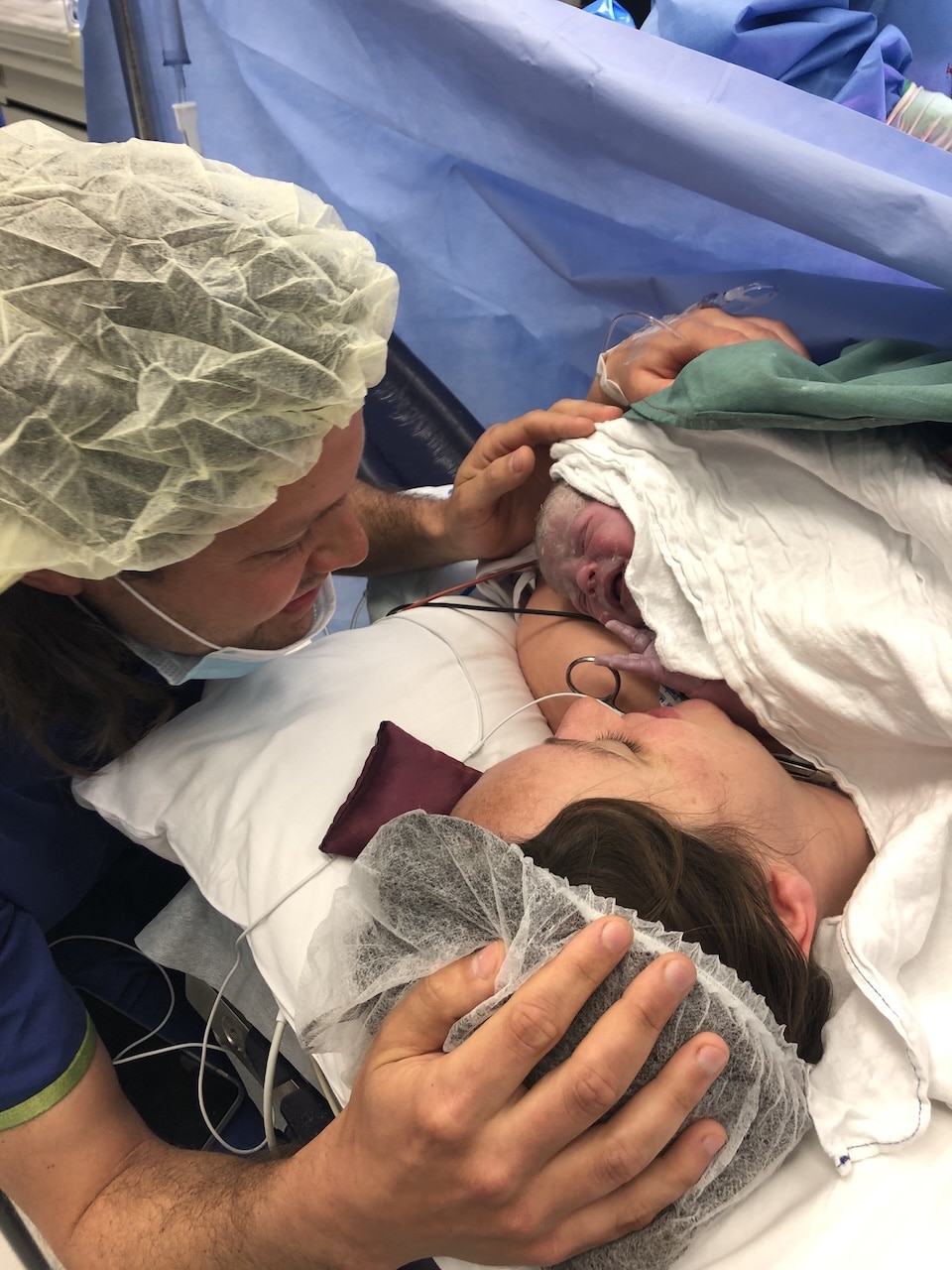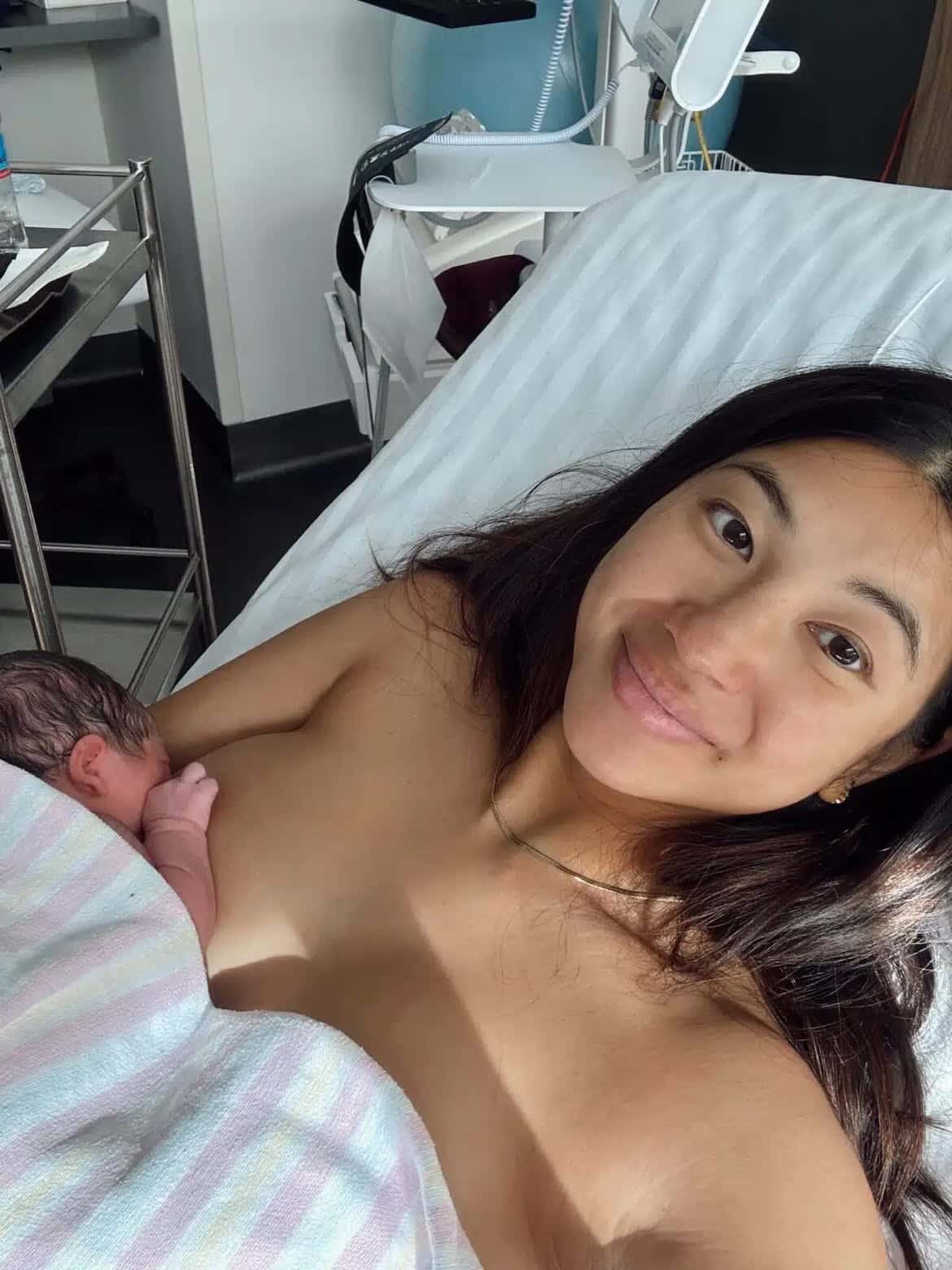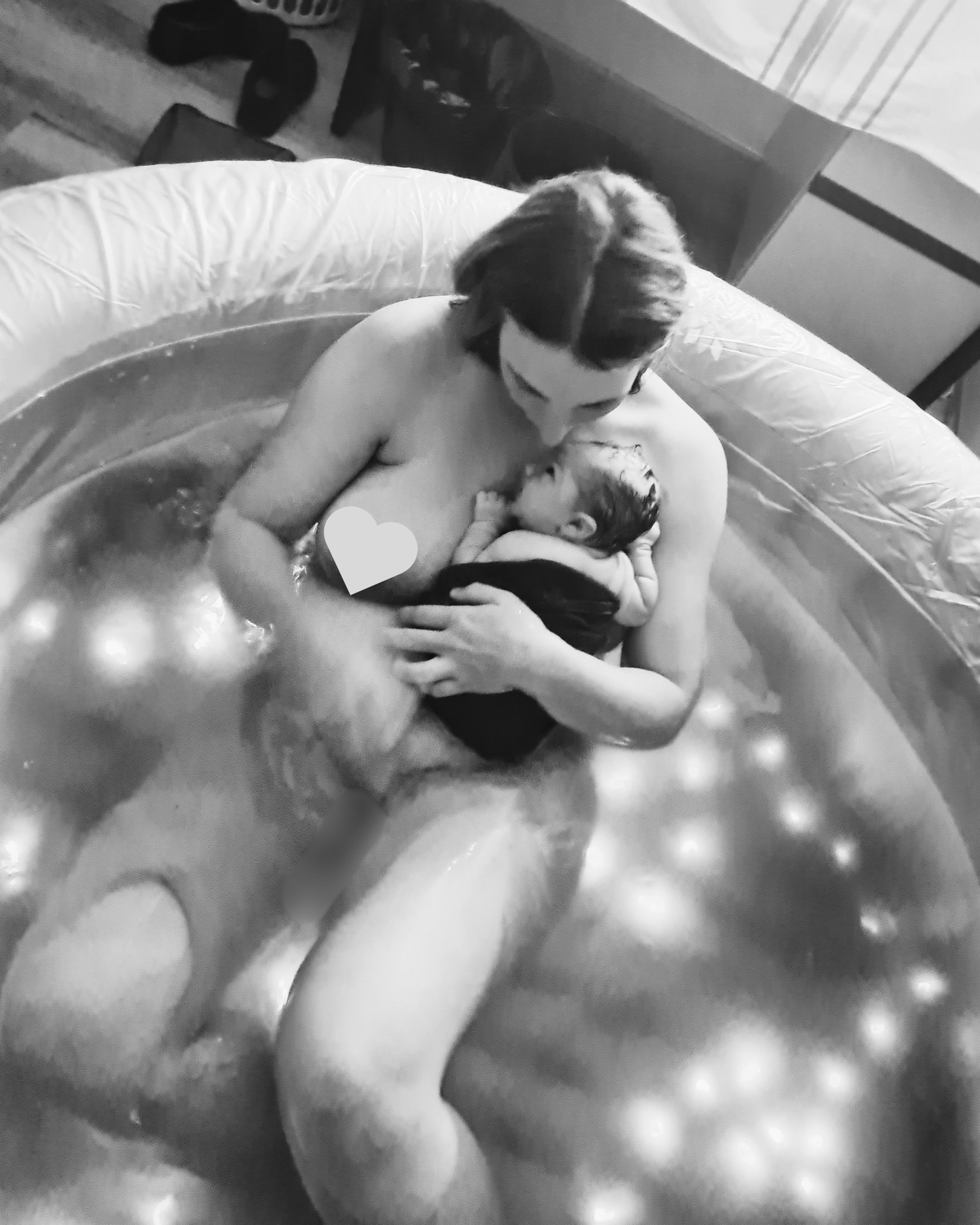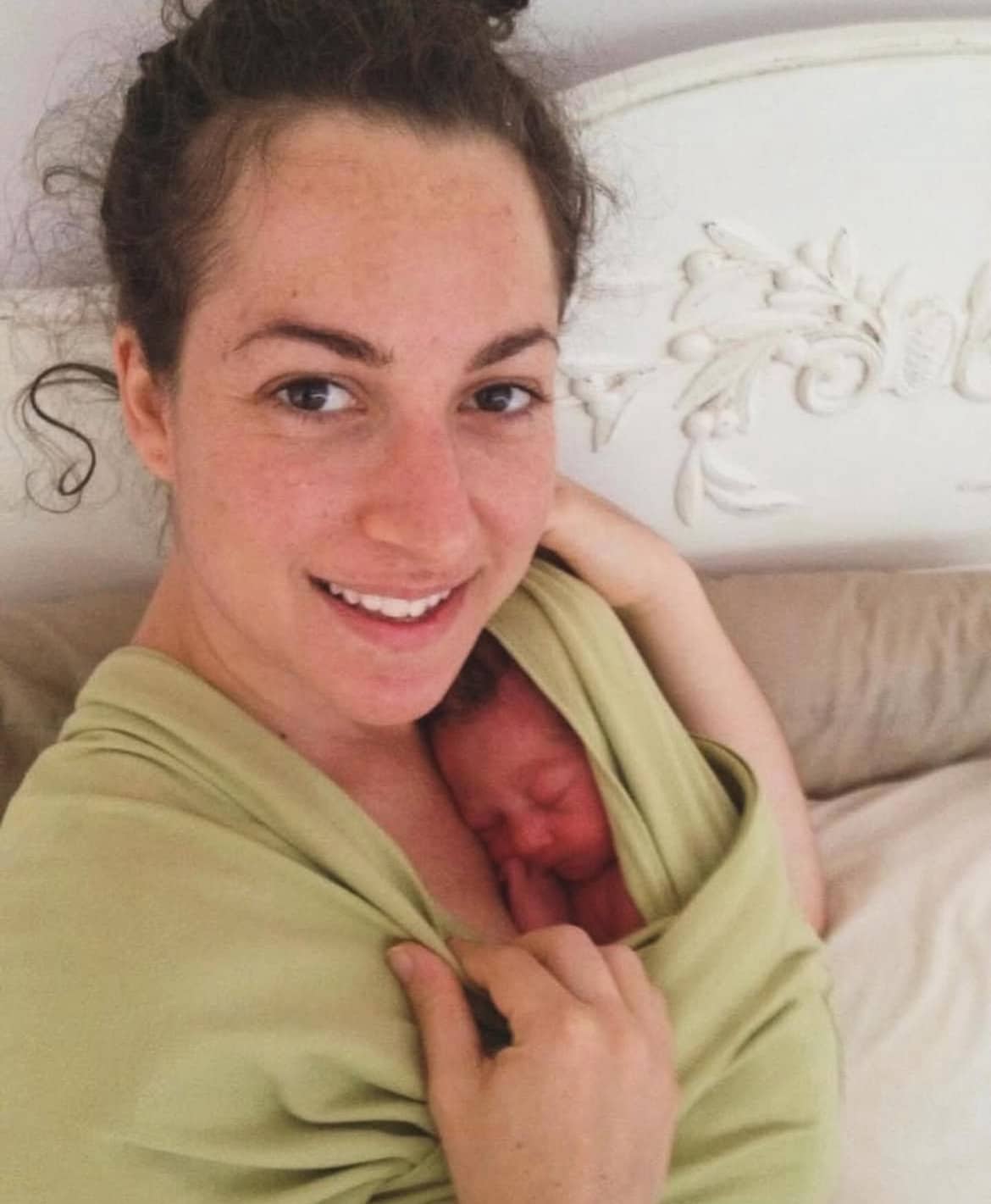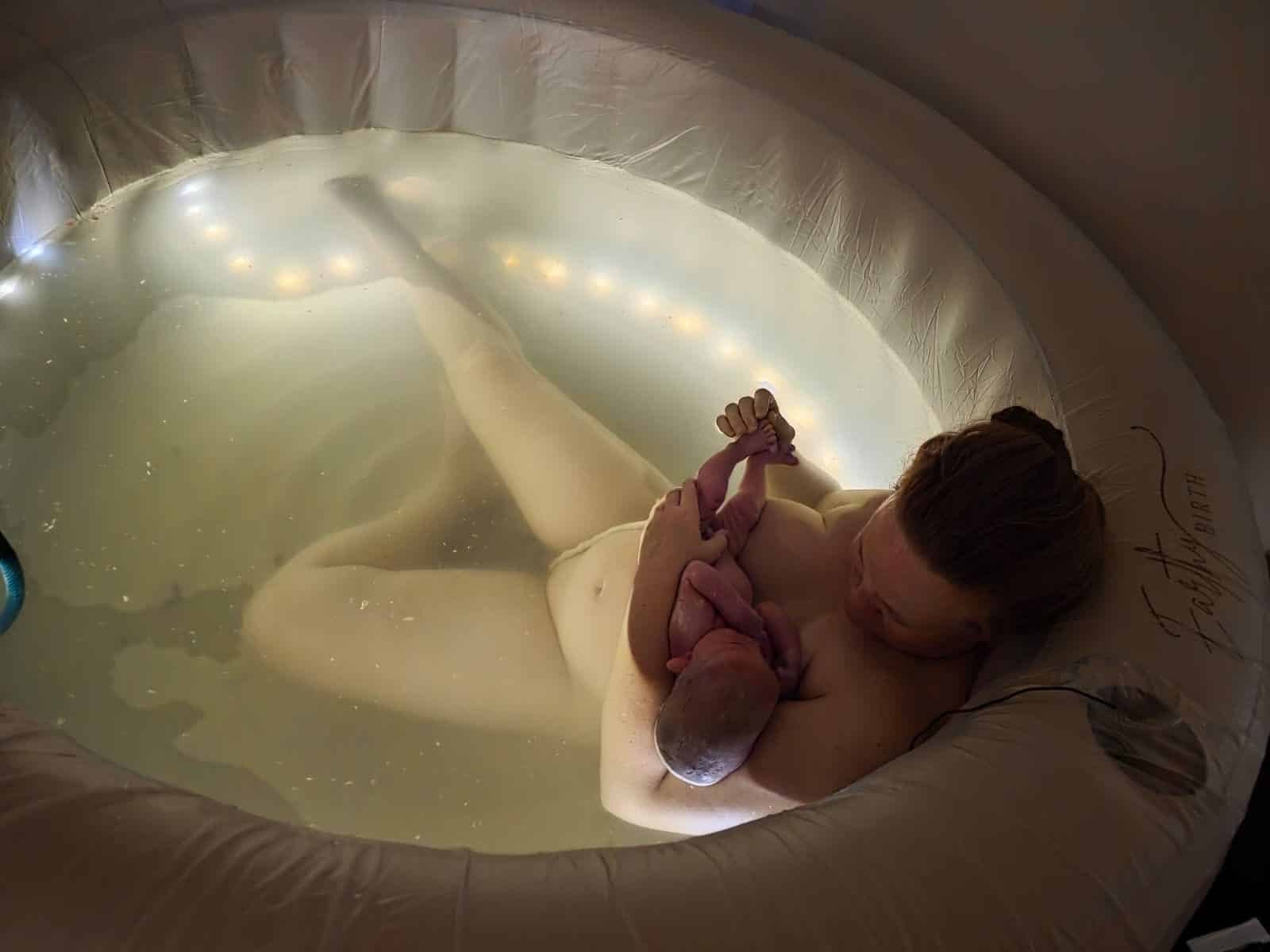Podcasts Katelyn – vaginal birth, fraternal twins, cholestasis, IUGR, physiological twin birth, breastfeeding
EPISODE 498
Katelyn – vaginal birth, fraternal twins, cholestasis, IUGR, physiological twin birth, breastfeeding
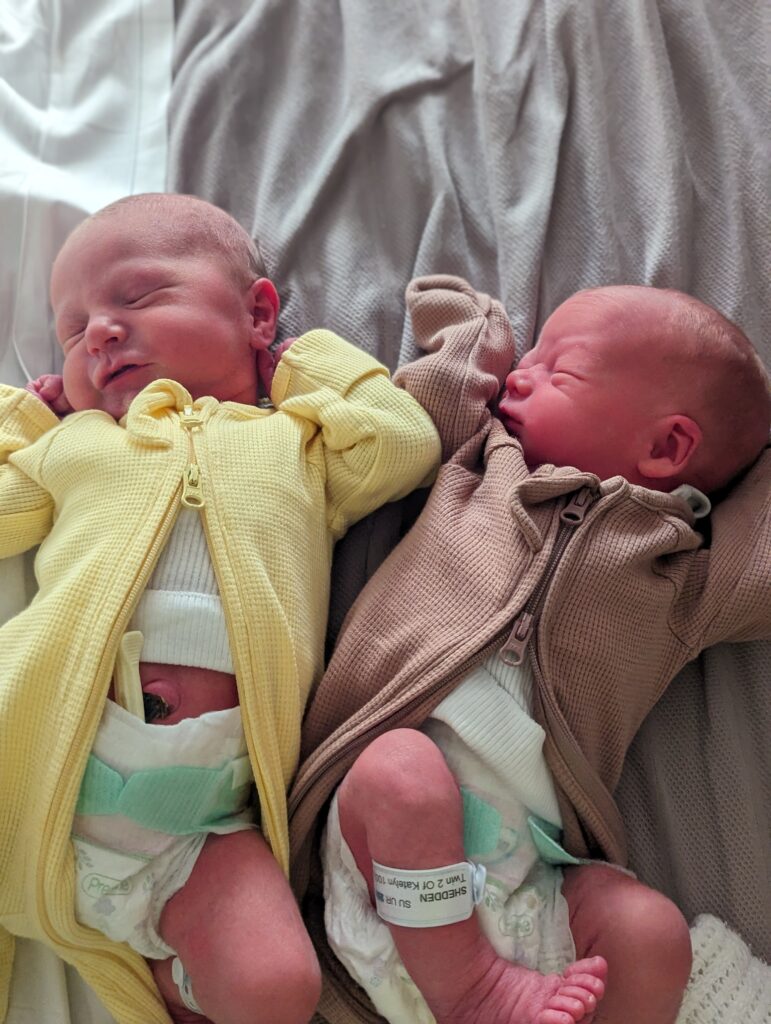
“I fell pregnant on the first cycle so I was six weeks at our wedding. We decided to go with a private obstetrician because I wanted continuity of care and I really liked her; she was direct and considerate and had a great midwife onstaff who was excellent over the phone. A few of my family members have had preterm births so that did inform my anxiety but I was much more calm after the 30-week mark.
“I listened to the podcast and started with the episodes that aligned with the birth I thought I wanted; vaginal birth low-intervention, to get a hold on what that experience may be like. And then as I got a bit further along, I listened to more diverse experiences so I could understand what could happen during labour and birth.
“At 37+2 I went into spontaneous labour. I’d noticed some blood that morning and I’d spent the day with friends in the evening, I noticed mild contractions. I called the hospital for the third time that day and they encouraged me to go in and get checked. We got there at about 10 pm and put my on the CTG machine to monitor me; everything looked fine. I was adamant that I wanted to labour at home so at midnight we left the hospital and then as soon as we got home, labour ramped up really quickly. I spent most of my time in the bathroom and I stamped my feet a lot which helped and used cold and hot water. At about 2am I was starting to get frightened and I called the hospital and they encouraged me to stay at home but then an hour later I knew I had to go in. I made it to the birthing suite and was screaming for help so of course, I was in transition.
“I had a fantastic midwife who normalised it for me and really reassured me that everything was fine. I used some gas and then at 6am I asked for pain relief and that’s when they told me I was fully dilated; I had been since I arrived. I pushed for about an hour and my obstetrician arrived just before he was born. I was exhausted but I felt so happy that I’d experienced a low-intervention birth. We got a lot of skin-to-skin and he fed straightaway. I wish I’d done more research into breastfeeding. Everyone says breastfeeding is the hardest, but it really was so hard for me. Unfortunately I sustained really bad nipple damage from that first feed and that set us up for the spiral of the first weeks. The advice from the midwives was to stop feeding and pump for 48 hours to give my nipples a break, and then to try again. It took me till about six months to really feel comfortable breastfeeding. I saw a lactation consultant after the maternal child health nurse diagnosed a tongue tie, and she wasn’t concerned with the mechanics of his mouth, but instead supported me with latch and holding and she helped us turn our journey around.
“Once Arlo turned two, we decided to start trying and again, we conceived quickly. I knew I was pregnant straight away; I could feel it in my body. I booked in with the same obstetrician and at out eight week dating scan, we found out it was twins. We swore and we laughed a lot. They’re fraternal twins so that was one egg released from each ovary. I called the obstetrician and notified her that I was having twins and that’s when I found out she only delivered twins via caesarean. I asked why and I was simply told it was her policy. She called me and talked to me about a few experiences she’d had that didn’t have positive outcomes and she didn’t support twin birth enough to feel confident so she referred me to one of her colleagues.
“The second obstetrician was very conservative and the first appointment caught me off guard; he told me with twins I would be induced, I’d have an epidural and I’d birth on my back. That wasn’t the experience I necessarily wanted to have. I walked away feeling unsure. I went to a second appointment with him and spoke about my preferences – not having an epidural. At 25 weeks, I didn’t feel like he was a good fit. I was nervous about changing care providers but I had the confidence to do it after listening to so many of your podcast episodes and I had done a lot of research.
“I looked at private midwifery care and birthing at a public hospital. I couldn’t book in with this one particular midwife but she met me and spoke about the risks associated with twin birth and my choices and that’s when I really felt confident to leave that second obstetrician and pursue another avenue. I saw Dr Mike Allen the following week and it was such an emotional appointment; I felt like I was so far along already and I wanted to form a relationship with someone who would support me. I felt really listened to, I spoke about my preferences for a vaginal birth without epidural and he was really supportive and confident, and a great listener.
“From 20 weeks, Twin B was a concern because of his size. He was always a bit smaller. At 28 weeks I was diagnosed with cholestasis; my hands and feet all of a sudden got very itchy so I called the hospital straight away and they told me it would be an early diagnosis if it was it. A blood test confirmed that I had it so I went on medication for that which really helped with the itching. Twin B was eventually diagnosed with intrauterine growth restriction (IUGR) so an induction was inevitable. We made it to 36 weeks and the scan showed my placenta was starting to deteriorate and not support Twin B and at that point, we were encouraged to consider induction at 37 weeks.
“I was really nervous about induction so I went on a big journey of research and I mapped out my preferences for whatever may happen. I went to an appointment and I was already contracting; I was 1- cm and 80 percent effaced so Mike was happy to break my waters the next day and just see what happened. I wanted to hold off using syntocinon. I had agreed to have the epidural line in but I didn’t want that done till I was in established labour because I didn’t want the test meditation to slow my labour. Twin A was head down and Twin B was underneath and transverse.
“We went to hospital at 6am and I had the most fabulous midwife, Erin, who listened to everything I had to say and reassured me that she’d be beside me and we’d just see what happened. I was 3-4 cm when Mike broke my waters at 7:30am. He gave me four hours to establish labour. The anaesthetist came in to talk to me and answered my one million questions and told me he’d come back later. Erin was moving at quite a pace and I should have picked up on that but I didn’t, I just moved around the room labouring. I went into a meditative zone and moved through the contractions as best I could. Erin put the TENS machine on me and it was incredible.
“I was feeling a lot of pressure and coming up onto my toes, So Erin encouraged me to get on the bed and she told the other midwife to call Mike. That was about 90 minutes after they broke my waters. There was a tiny bit of cervix left but Juniper’s head was there and I was ready to push. Mike arrived and Juniper was born at 10:20am and I cuddled her for about five minutes. Austin had turned into a head down position in the meantime and he was born nine minutes later. They were both really responsive. My placenta was being a bit stubborn so they took the babies and then I birthed the placenta and I had a massive bleed. That was the scariest part of the whole thing. Erin went from benign calm and soft to very direct and she told me I had to do exactly what she asked. She had to put her hand in my uterus to help it contract but they got the bleeding under control, with a syntocinon drip as well.
“I stayed in the birthing suite for about three hours and the paediatric team warned me that Austin would have to go to the NICU if he showed any sign of distress because of his size. Erin noticed Austin’s breathing wasn’t quite right so they took him to NICU and gave him sugars which is all he needed. I hand expressed and pumped for the first few days and then when I was discharged, I’ve been triple-feeding. Four months on I still pump after every feed because they both have anatomical limitations which make feeding challenging. We’re taking it day by day.”
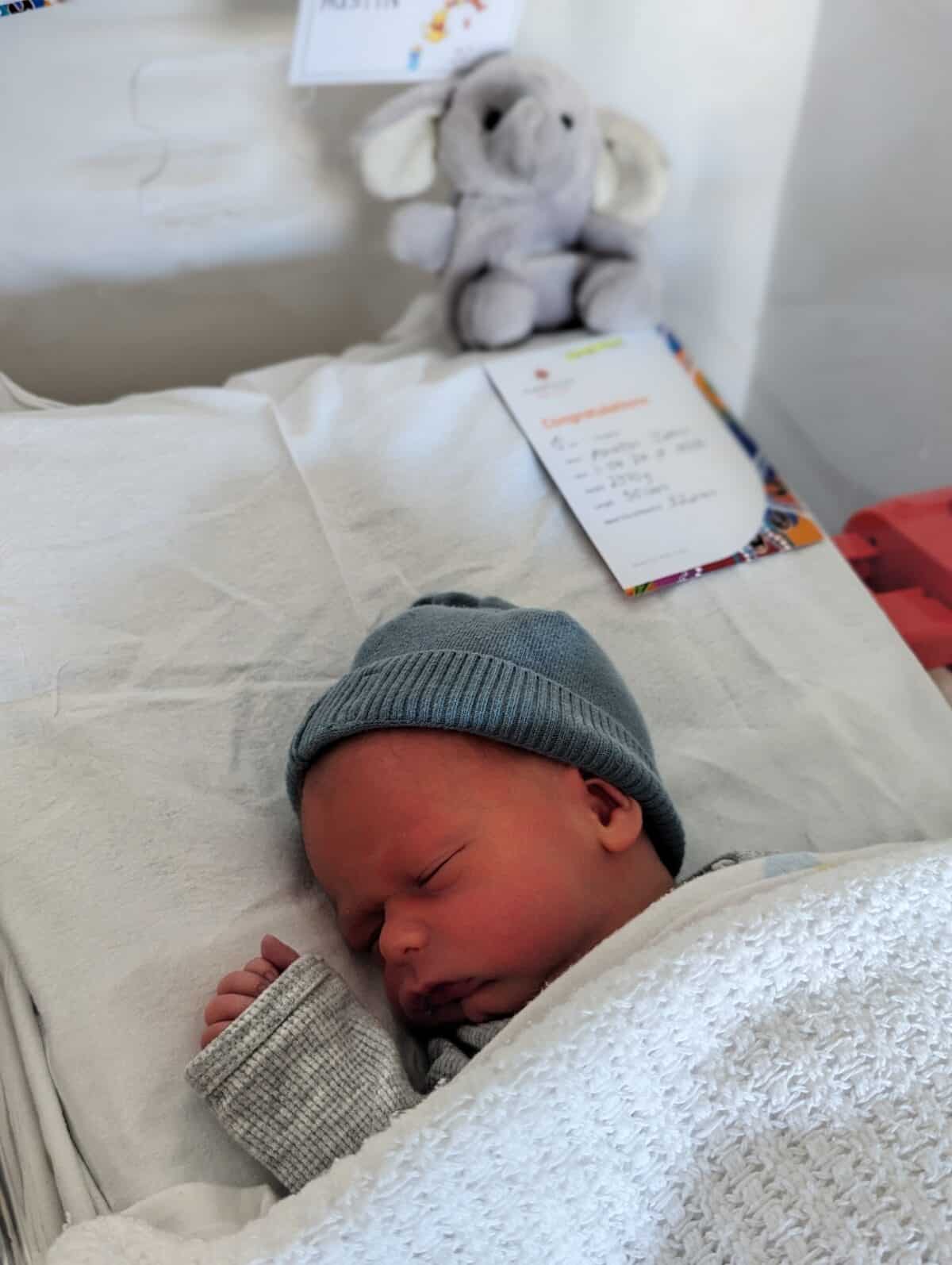
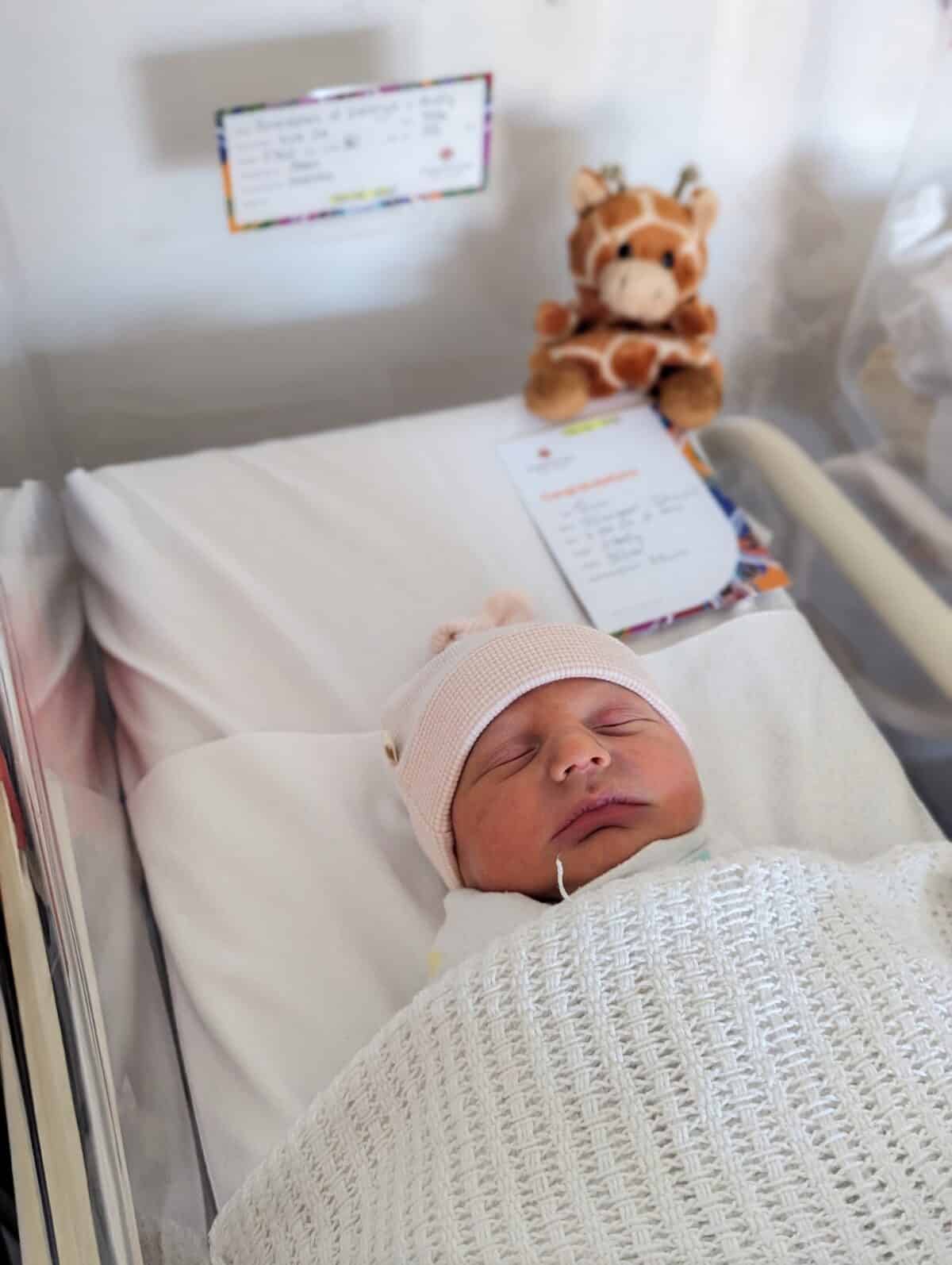
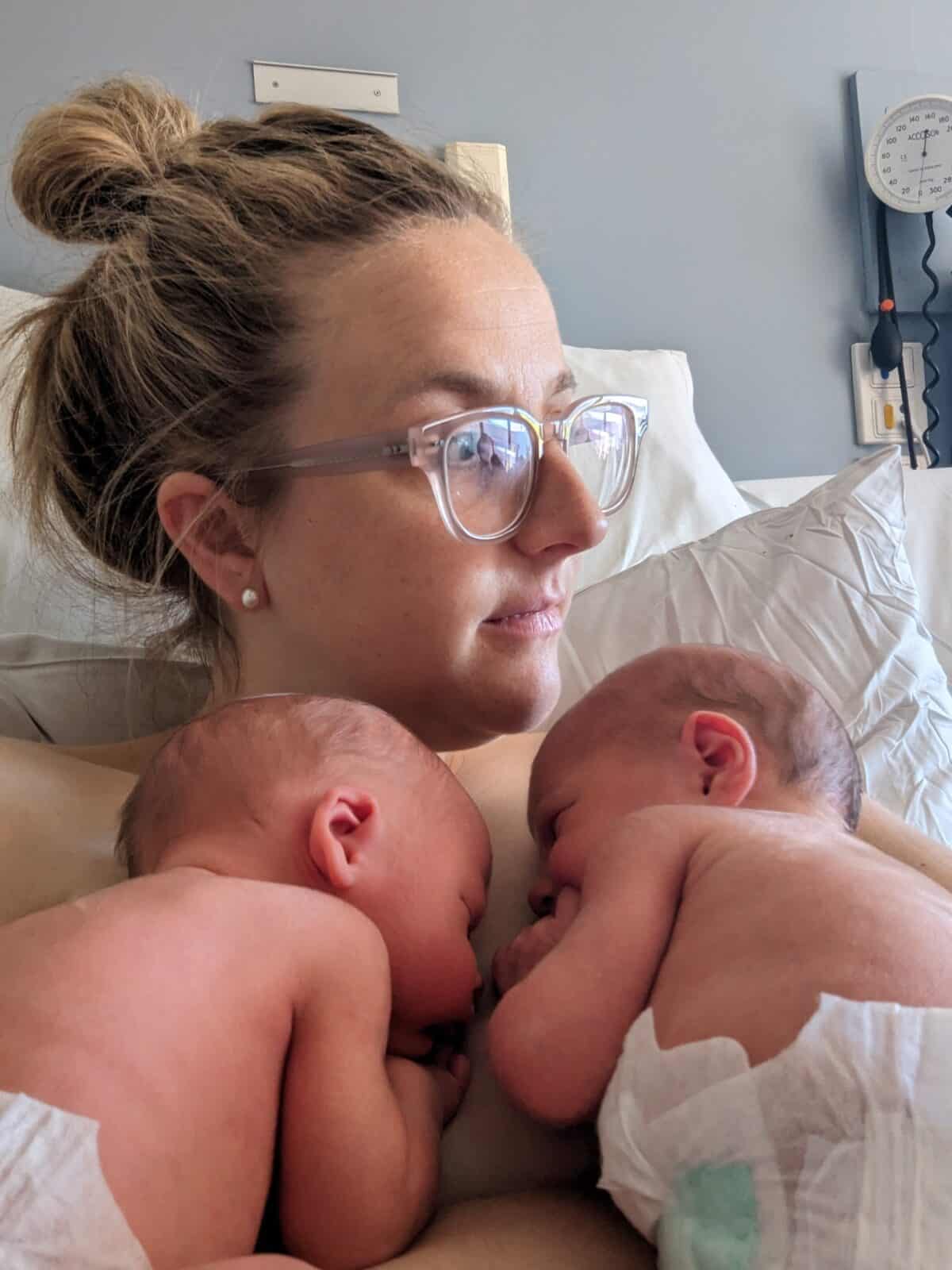
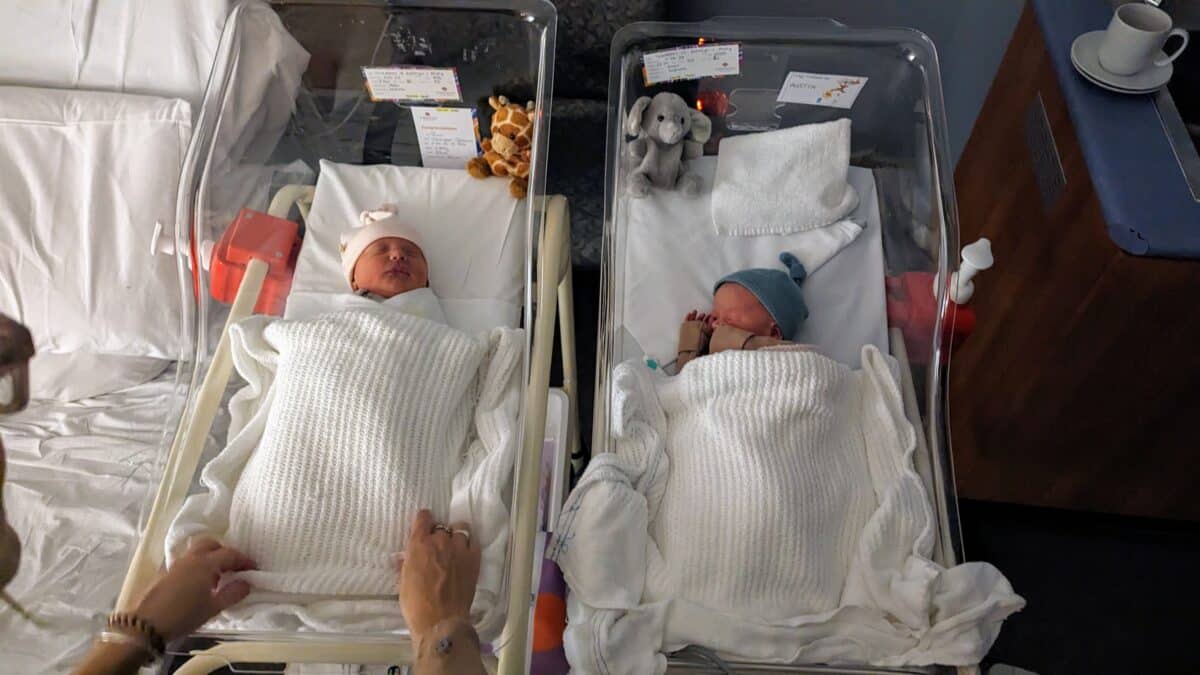
Topics Discussed
Breastfeeding, Cholestasis, Fraternal twins, IUGR, physiological twin birth, Private obstetrician, Three babies, Vaginal birth
Episode Sponsor
Today’s episode is brought to you by Bliss Birth. Bliss Birth is founded on the belief that women’s bodies are incredible things, and that when it’s safe, choosing natural options makes for the best outcomes for mums and babies. That’s why Ariel has developed a range of products to support your natural birth experience. Introducing the most advanced natural pain management device for labour available in Australia – The Elle TENS Plus. TENS stands for Transcutaneous Electrical Nerve Stimulation and it is the ultimate birth tool as it maximizes your body’s natural pain-fighting abilities.
Bliss Birth offer both 4 and 8 week hire periods, Pre-addressed, prepaid return (No printer needed). The ‘Mama Bag’ valued at $10.95 is yours to keep!
You can enjoy 10% off Bliss Birth with the code ABS24
Head over to BlissBirth.com.au
Categories
Related Products
-
Birth Combs: Harness Your Body’s Natural Pain Relief
$24.95Crafted from smooth, natural wood, our birth combs activate specific pressure points in your hands that trigger your body’s innate pain-relieving responses.
Join the conversation
Sign up to get the latest updates, freebies, podcast releases straight into your inbox
@AustralianBirthStories
Follow along with us
@AustralianBirthStories
Follow along with us
@AustralianBirthStories
Follow along with us
@AustralianBirthStories
Follow along with us
@AustralianBirthStories
Follow along with us
@AustralianBirthStories
Follow along with us
@AustralianBirthStories
Follow along with us
@AustralianBirthStories
Follow along with us
@AustralianBirthStories
Follow along with us
@AustralianBirthStories
Follow along with us
@AustralianBirthStories
Follow along with us
@AustralianBirthStories
Follow along with us
